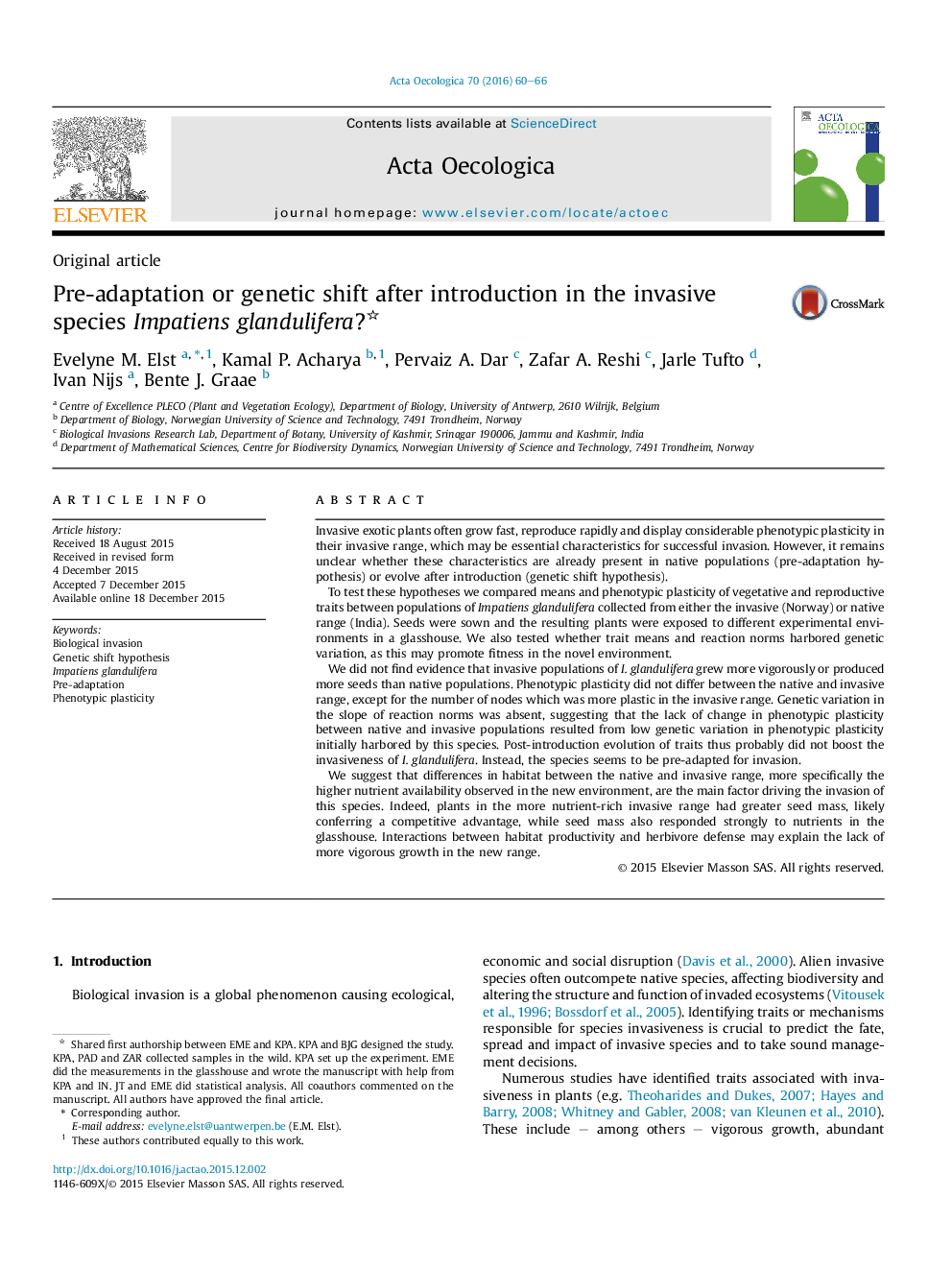| کد مقاله | کد نشریه | سال انتشار | مقاله انگلیسی | نسخه تمام متن |
|---|---|---|---|---|
| 4380801 | 1617702 | 2016 | 7 صفحه PDF | دانلود رایگان |
• Most traits of Impatiens glandulifera are pre-adapted for invasion.
• Number of nodes shifted to higher phenotypic plasticity in invasive range.
• Invasive populations produced heavier seeds, probably due to more nutrients.
• Disturbed and nutrient rich sites in invasive range mainly drive invasion.
• Weak herbivore defense might explain non-vigorous growth in invasive range.
Invasive exotic plants often grow fast, reproduce rapidly and display considerable phenotypic plasticity in their invasive range, which may be essential characteristics for successful invasion. However, it remains unclear whether these characteristics are already present in native populations (pre-adaptation hypothesis) or evolve after introduction (genetic shift hypothesis).To test these hypotheses we compared means and phenotypic plasticity of vegetative and reproductive traits between populations of Impatiens glandulifera collected from either the invasive (Norway) or native range (India). Seeds were sown and the resulting plants were exposed to different experimental environments in a glasshouse. We also tested whether trait means and reaction norms harbored genetic variation, as this may promote fitness in the novel environment.We did not find evidence that invasive populations of I. glandulifera grew more vigorously or produced more seeds than native populations. Phenotypic plasticity did not differ between the native and invasive range, except for the number of nodes which was more plastic in the invasive range. Genetic variation in the slope of reaction norms was absent, suggesting that the lack of change in phenotypic plasticity between native and invasive populations resulted from low genetic variation in phenotypic plasticity initially harbored by this species. Post-introduction evolution of traits thus probably did not boost the invasiveness of I. glandulifera. Instead, the species seems to be pre-adapted for invasion.We suggest that differences in habitat between the native and invasive range, more specifically the higher nutrient availability observed in the new environment, are the main factor driving the invasion of this species. Indeed, plants in the more nutrient-rich invasive range had greater seed mass, likely conferring a competitive advantage, while seed mass also responded strongly to nutrients in the glasshouse. Interactions between habitat productivity and herbivore defense may explain the lack of more vigorous growth in the new range.
Journal: Acta Oecologica - Volume 70, January 2016, Pages 60–66
